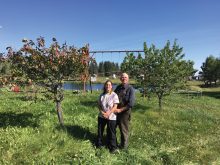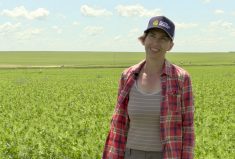High prices and the prospect of fewer input costs are attracting more farmers to organic farming in Manitoba.
At least 30 farmers began a transition in 2015, convinced they can become more profitable using a farming system that also costs less to operate, says provincial organic specialist Laura Telford.
They are conventional farmers who’ve crunched the numbers and are seeing a business case to convert, she said.
Judging by the crowd at an Ag Days seminar devoted to organic production, it appears there’s more thinking about it.
Read Also

Manitoba sclerotinia picture mixed for 2025
Variations in weather and crop development in this year’s Manitoba canola fields make blanket sclerotinia outlooks hard to pin down
“A lot of people are looking at our cost of production with interest and the fact you can be quite profitable in organic agriculture,” said Telford.
It’s a marked contrast to years gone by when a couple dozen farmers already organically farming attended.
About 140 were at last month’s meeting listening to presentations about the transition process, other farmers’ management practices, and how farming this way can be good for the bottom line.
Manitoba Agriculture crop production budget expert Roy Arnott told the seminar that based on expected costs and returns for crops this year, organic producers could see net profit levels range from $100 to $300 per acre.
- Read more: Organic potatoes a tough row to hoe — but profitability makes the effort to produce them worthwhile
That compares with conventionally produced crops, whose net profits range between $10 to $50 per acre, he said.
Those numbers may not be coming as a surprise, said Telford. “People have been hearing about this for a while,” she said.
“Sometimes it takes extra low prices on the conventional side to make them notice those high organic prices,” she said.
Making the move to an organic system is neither simple nor quick, however, as panellists attested.
“It’s kind of no man’s land when you’re comfortable with a conventional system and you’re trying to anticipate how you’ll go through a few years of a learning curve to get to the other side,” said Darcy Hickson, who switched to organic farming in 1999. He and his son Donovan now farm together on 1,000 acres and also raise organic cattle.
Brandon-area organic farmer Ian Grossart described the struggles he had trying to start the transition to organic in the late 1990s with a field of echinacea. It was a crop they weren’t familiar with and was a mess of weeds, he said.
“I probably convinced some conventional neighbours to never go organic,” he joked.
But the Grossarts persevered, and today grow a range of organic crops on a farm where they also raise grass-fed beef.
Organic farming is “a steep learning curve,” but fortunately there are more resources now available to help farmers decide if it’s the right direction to take, said Telford.
“We’ve learned a lot in the last decade with respect to weed management, designing good crop rotations,” she said.
A new publication Organic Field Crop Handbook has recently been published and is available through Canadian Organic Growers online.
Farmers will have another chance to network with organic buyers, and to learn more about the skills required for managing an organic production system later this month.
The two-day Prairie Organics: Think Whole Farm Feb. 18 and 19 will provide existing organic producers with more information to build their production and marketing skills and help them connect to potential buyers who will be present at the show for one-on-one meetings.
Breakout sessions for grain and livestock producers are targeted at those now farming organically. A separate stream for vegetable production will provide more information to existing conventional vegetable producers who may be considering transitioning a few acres to organic.
There are fewer than 150 organic farmers in Manitoba. The majority is strictly field crop producers (120), plus 27 crop and livestock producers.
Only five farms currently grow organic vegetables for retail or wholesale markets. There are other smaller-scale growers selling consumer direct.




















